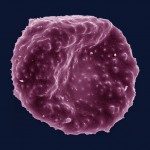Link to Pubmed [PMID] – 1896607
Res. Immunol. 1991 Mar-Apr;142(3):199-210
Genomic DNA fragments of Plasmodium falciparum generated by mung bean nuclease digestion were cloned in the lambda expression vector lambda JK2. The resulting library was screened with a rabbit antiserum raised against purified membranes of P. falciparum-infected erythrocytes and with a serum pool from immune humans from an endemic area of Liberia. Positive clones were rescreened with a series of human and monkey sera. Twelve selected clones were analysed in detail. Four of them corresponded to already described membrane-associated P. falciparum antigens. The other positive clones contained inserts which, according to the nucleotide sequence, Southern blot analysis and immunological characteristics, correspond to so far unknown antigens.

